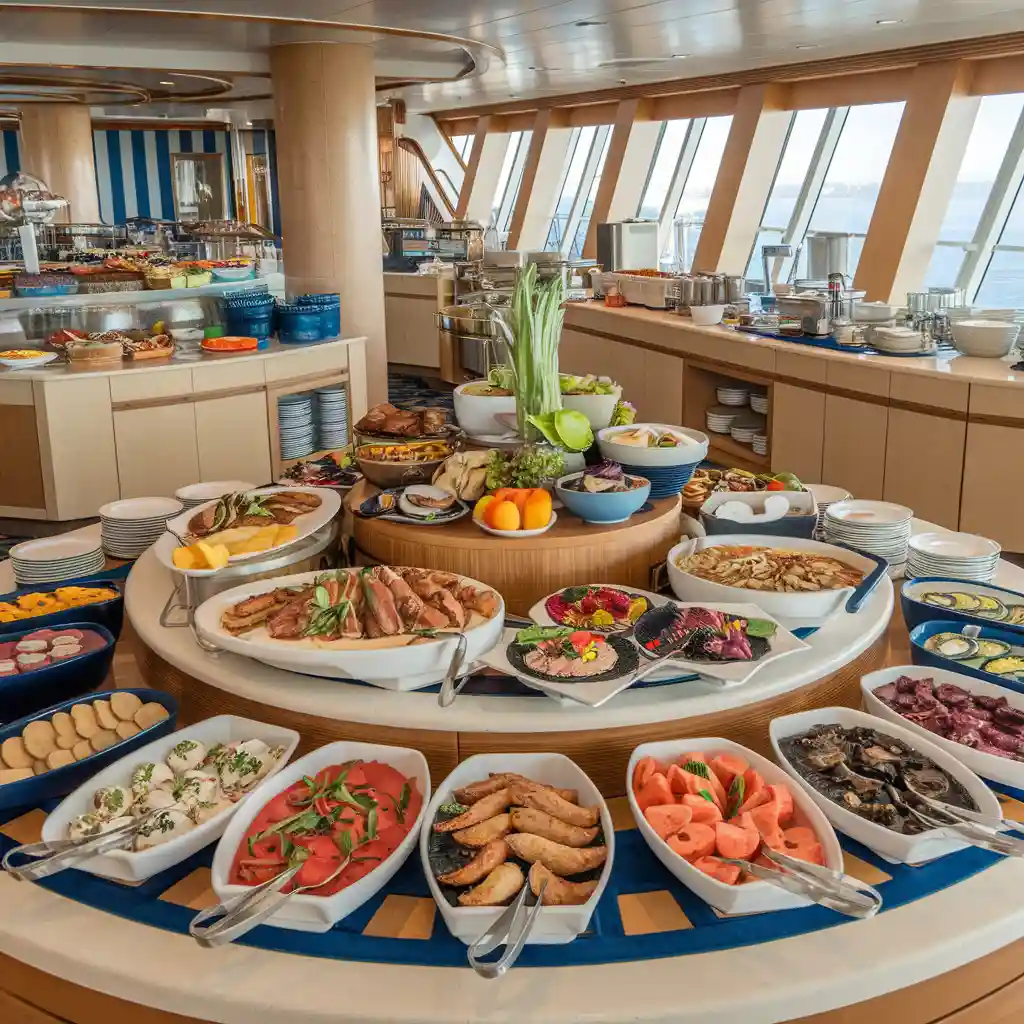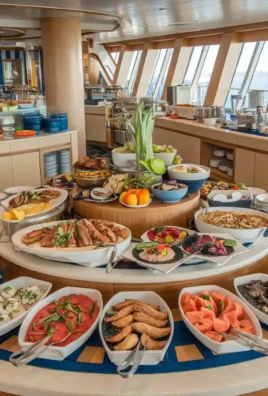Things to Avoid Eating on a Cruise
One of the most enticing aspects of going on a cruise is the food, with lines like Silversea and Seabourn offering an impressive variety of high-quality meals. However, regardless of how well-regarded the food on a cruise might be, there are certain dishes you might want to steer clear of.

10 Foods You Might Want to Pass On A Cruise
1. Leafy Greens and Pre-Cut Fruits
These nutritious options are popular but can become contaminated if mishandled. To ensure safety, it’s best to opt for whole fruits you can peel yourself and thoroughly cooked vegetables unless you’re confident in their cleanliness.
2. Raw or Undercooked Seafood
Seafood can certainly be a highlight of cruise cuisine; however, eating it raw or undercooked may involve considerable health risks. Shellfish are particularly prone to harmful bacteria and viruses. Choosing fully cooked seafood dishes will help lower the chances of foodborne illnesses.
3. Sushi from Unreliable Sources
Although sushi is a tempting option, eating it on a cruise can be risky when the preparation or source is questionable. Raw fish can harbor unwanted bacteria. Stick to respected dining venues with stringent food safety protocols for your sushi choices on board.
4. Exotic Fruits and Vegetables
Sampling unique foods from various destinations can be an exciting treat while on vacation. However, if your digestive system isn’t familiar with exotic fruits and vegetables, they might lead to discomfort. To minimize the chance of gastrointestinal issues, it’s advisable to introduce these items gradually and consume them in moderation, monitoring your body’s response.
5. Street Food at Ports of Call
Sampling local street food can be risky due to differing hygiene practices, as street vendors might not always prepare food under optimal safety standards. Exercising caution and being selective about the foods you try in unfamiliar places is advisable.
6. Unpasteurized Dairy Products
Unpasteurized dairy products might provide a rich and fresh taste, yet they carry the risk of containing harmful bacteria. Pasteurization involves heating, which eliminates these risky microbes, making the foods much safer. To avoid illness, ensure all dairy products onboard have undergone pasteurization before consumption.
7. Tap Water
Even on luxurious cruises, the safety of tap water may be questionable, particularly when the ship is in port. It’s advisable to opt for bottled water when drinking or brushing your teeth to minimize the risk of contaminants.
8. Ice in Beverages
The concern with tap water also applies to ice, which could be a concealed source of bacteria. Onboard, confirm that ice is made using purified water. When ashore, it’s better to skip the ice altogether. Make a point of requesting your drink without ice.
9. Buffet Items Remaining Out
While cruise ship buffets are convenient and plentiful, they can pose risks as well. It’s challenging to determine how long buffet items have been presented or if they’ve been touched by others. Food that stays out too long can become a breeding ground for bacteria, increasing the risk of foodborne illness. Hot items should remain hot, while cold options must stay cool.
10. Leftovers from Room Service
While it might be tempting to hold on to room service leftovers—especially if they were scrumptious—they can easily become rife with bacteria if not properly stored. According to USDA recommendations, dispose of perishable items that have been left unrefrigerated for over two hours or for more than one hour if the temperature exceeds 90°F. Feel free to discard any food you’re uncertain about—there’s no shortage of other culinary delights onboard to savor.


Leave a Comment